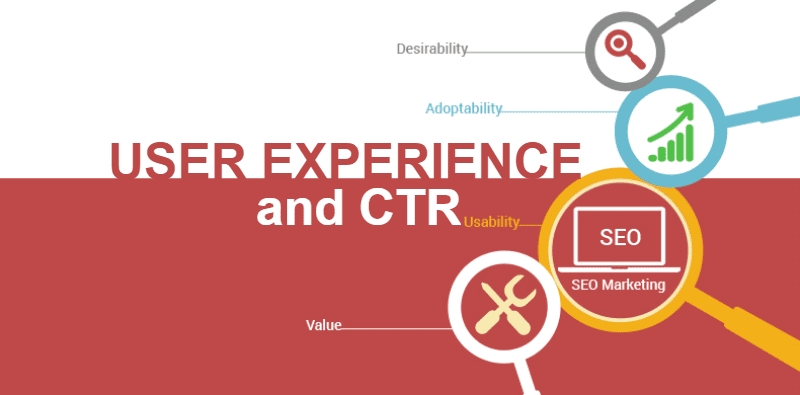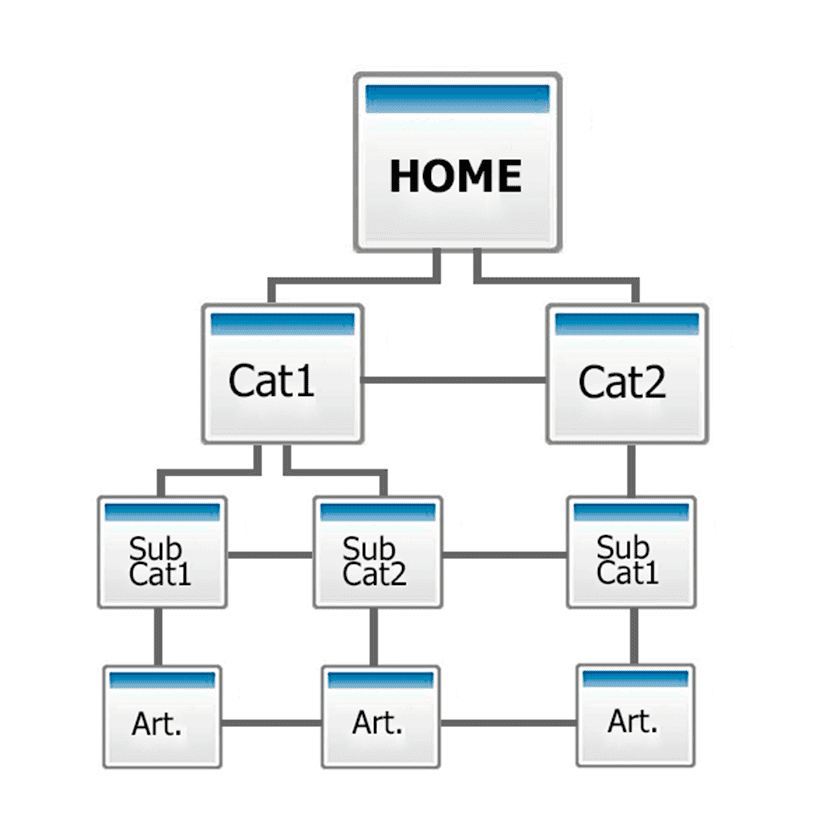When we talk about SEO, we are always commenting on how important the OnPage optimization and external links are. This is quite true, they are very important, and they are still two of the most relevant factors when it comes to positioning a website in Google, however, there are other factors that are becoming more relevant in Google such as CTR and User experience (UX).
What is CTR?
CTR concept can be summarized in the percentage of clicks that users from the browser on your search result do.
That is, you are positioned in Google for x keywords and when users search for those words in the search engine and click on those results and access them. Google knows what% of users click on average in each of the results.
So, if your web has a higher% of clicks than the average, your CTR improves and therefore Google assumes that your result may be more interesting for users than the rest.
What is the user experience?
The user experience could be said to be the ideal complement of the CTR, why? When the user accesses your website that comes from Google, Google knows that the user has accessed your website. If the user has a good experience, he will remain on your website and will not go to another. However, if the user has a bad experience, what he will do is click on the “back” button of the browser or search Google again for other websites that satisfy him.
Google will know that the user has gone back or that he has returned to make a search on the same subject in a very short time, and this for Google will mean that the experience of the user has been bad on your website and that is why the user has looked for another website that is not yours in the search engine.
In addition, this will mean that your competitors’ CTR will go up because the user will click on other results because of the bad user experience he has got on your website.
How to improve the CTR of our website for SEO?
Improving meta title and meta description
The meta title and meta description are not two labels that only serve to optimize and enter the keywords you want to position, but are the showcase we have for users when they search on Google, as are the texts that users see When they perform a search and appear.
That is why it is very important to use good “call to action” meta titles with which users choose to click on our result instead of clicking on our competition.
For example, a good call to action in eCommerce is to put the price in the meta title or in the meta description.
Why? Because on most occasions, users go with a predefined maximum budget, and if when they search only the price on Google, they will take a glance at your page if it fits in their budget, and if so, they will decide to click on Your result instead of entering into that of others, as they do not know the price of the rest or whether it will really fit into their price profile. Also, another very good call to action could be to promote some discount that we have active directly in our meta title or meta description.
Data marking
The data marked by rich snippets is a way to ensure better CTR as you increase your visibility in the search results showing extra and important information.
There is a multitude of rich snippets, the most classic being the rating stars that always draw a lot of attention when they appear in the search results, although there are much more like tagged price data, recipes, flights and a long etcetera.
All this will call a lot more attention to eyes of the user who performs the search and therefore be more likely that the user clicks on your result and therefore increase your CTR that way.
In WordPress, there are many plugins with which you can easily configure the rich snippets such as All in One Schema.org that can be downloaded from the official WordPress repository. The good thing about this plugin is that it allows you to configure many types of different data tags, so it will work for any type of website.
The tables of contents
Something that has become very fashionable is the tables of contents type Wikipedia. These tables of contents not only come in handy for issues of user and management of content but because these user tables make a small link to appear within our search result when that result has to do with something related to our table Contents.
Again this will make our result stand out from the rest and therefore the clicks probability increases, thus increasing the chances of our CTR to grow.
In WordPress, there is a simple way to generate tables of contents automatically and is done with the plugin table of contents plus, which can be download from the official WordPress repository. This plugin will make all the H2 and H3 tags of your posts, conform the table of contents of the article or a web page.
Increased visits
Perhaps the increase of visits is not directly related to the CTR, since when you buy visits from social networks or from another place, they are not users that access your website from Google, but it is true that buying regular visits can be beneficial if you have a quality website and is updated regularly, will be useful in building a community, and those users that you have obtained by buying visits, can then return to your website for latest updates.
What does this mean? That it will also increase our brand searches in Google because a large percentage of users access websites directly looking for brand or domain in Google and therefore will increase brand search, and on the other hand will also increase global CTR of our website because of those users who will access the website by searching the brand name in Google. This will be very interesting in the long run.
How to improve the user experience for SEO?
Navigation of the web
Internal linking is very important for OnPage SEO and as well as to users as a good internal linking makes it easier to navigate the website and learn more by reading relevant content. This means that we make it easier for the user to find the things they are looking for.
What is the problem of having poor navigability on our website? The user is usually comfortable, likes to find things quickly and easily, without having to search them, and if these conditions do not exist, the percentage of abandonment of our website will be quite high, worsening the user experience and indirectly worsening Our CTR and improving the competitors, since these users will return to the search engine and perform another search in which they will end up clicking on the results of our competition.
Load speed
Although it seems to be a secondary issue, the loading speed of a website is much more important than we think as users are impatient, and a web page may take longer to charge can mean the abandonment of those users and then they return to Google to look for another result that is different from ours, with the consequent worsening of user metrics, CTR and so on.
In WordPress, there are many ways to improve the load speed, for example using cache plugins like Total Cache or WP Super Cache. In the same way, there are also many other implementations that we can do to improve the speed of loading web pages like the minification of JavaScripts and CSS files by means of plugins like WP Super Minify or the asynchronous load of images by means of plugins like BJ Lazy Load.
Quality content
Something that is already known by all is that they tell us that our website has to have quality content, and it really is something very true. And this statement comes directly from Google Webmaster Guidelines that can help in better positioning the website. It makes the users stay on our page and do not go to Google again to look for other results (thus making user experience and CTR better).
As you may have noticed, I have talked about quality content that is useful for users but not about the content extension, since talking about having more or less extension is of no use today as it depends upon requirement.
In a web of information, it is surely more important to have extensive content that is related to your niche because you have more relevant information and therefore contribute more to the user, but in a web of YouTube videos, what matters least is the text and therefore both shorter texts will satisfy the needs of the user equally.
Renovation of contents
Something very important to improve the user experience is the renewal of content, but keep in mind that it does not apply to every niche.
There are static niches such as the webs of reforms, where it is not necessary to renew contents since, in terms of reforms, they will always do the same.
Other niches need the renewal of their static content that is content URLs that are always the same but whose content needs to be renewed with the new features. For example, this happens a lot with webs that deal with large “eCommerce Stores” which always have the same pages but they have to renew their information according to the changes or updates in plans/ products or services.
On the other hand, there are also niches that need the renewal of content in terms of quantity, that is to say, totally new content such as the websites about Information Technology that need new information or latest updates to satisfy the needs of its users.
Payment facilities
Depending on the type of website that we have, we also have to make all kinds of facilities and information available to users that address the questions and problems before going ahead.
For example, in an eCommerce, it is very important to provide the user with information on shipping costs, delivery time, payment methods, etc., to clear all these doubts that arise in a simple and easy way. If you do not complicate the user with the task to find this information, he will be satisfied with the experience and won’t leave the website to find another in Google.
Conclusion
Often we jump to create a project and focus on traditional SEO factors such as the OnPage and link building, but we must not forget that getting a good user experience and good CTR will not only make our users more satisfied but also help us to achieve a better result in search engines.

















